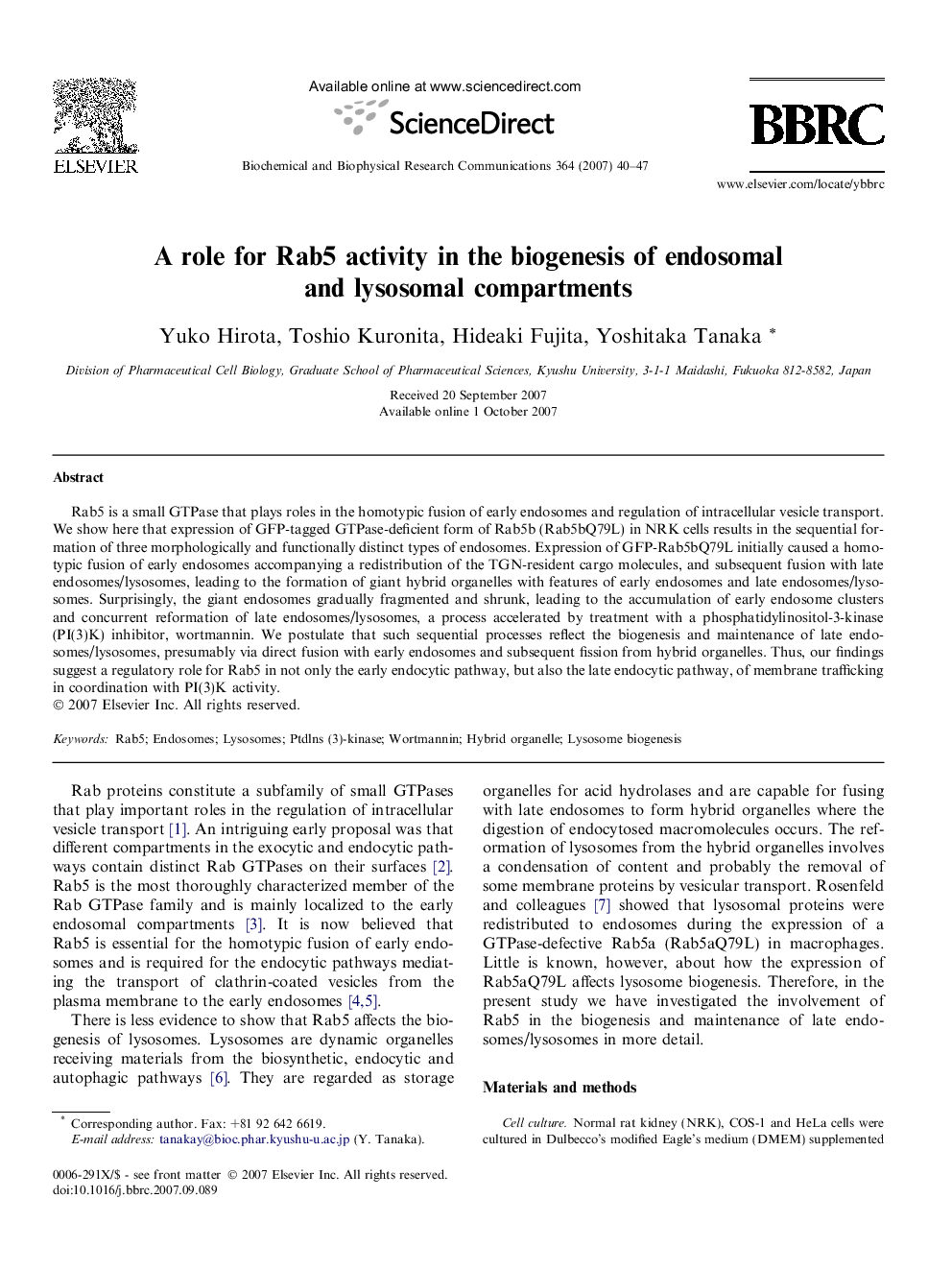| Article ID | Journal | Published Year | Pages | File Type |
|---|---|---|---|---|
| 1936902 | Biochemical and Biophysical Research Communications | 2007 | 8 Pages |
Rab5 is a small GTPase that plays roles in the homotypic fusion of early endosomes and regulation of intracellular vesicle transport. We show here that expression of GFP-tagged GTPase-deficient form of Rab5b (Rab5bQ79L) in NRK cells results in the sequential formation of three morphologically and functionally distinct types of endosomes. Expression of GFP-Rab5bQ79L initially caused a homotypic fusion of early endosomes accompanying a redistribution of the TGN-resident cargo molecules, and subsequent fusion with late endosomes/lysosomes, leading to the formation of giant hybrid organelles with features of early endosomes and late endosomes/lysosomes. Surprisingly, the giant endosomes gradually fragmented and shrunk, leading to the accumulation of early endosome clusters and concurrent reformation of late endosomes/lysosomes, a process accelerated by treatment with a phosphatidylinositol-3-kinase (PI(3)K) inhibitor, wortmannin. We postulate that such sequential processes reflect the biogenesis and maintenance of late endosomes/lysosomes, presumably via direct fusion with early endosomes and subsequent fission from hybrid organelles. Thus, our findings suggest a regulatory role for Rab5 in not only the early endocytic pathway, but also the late endocytic pathway, of membrane trafficking in coordination with PI(3)K activity.
